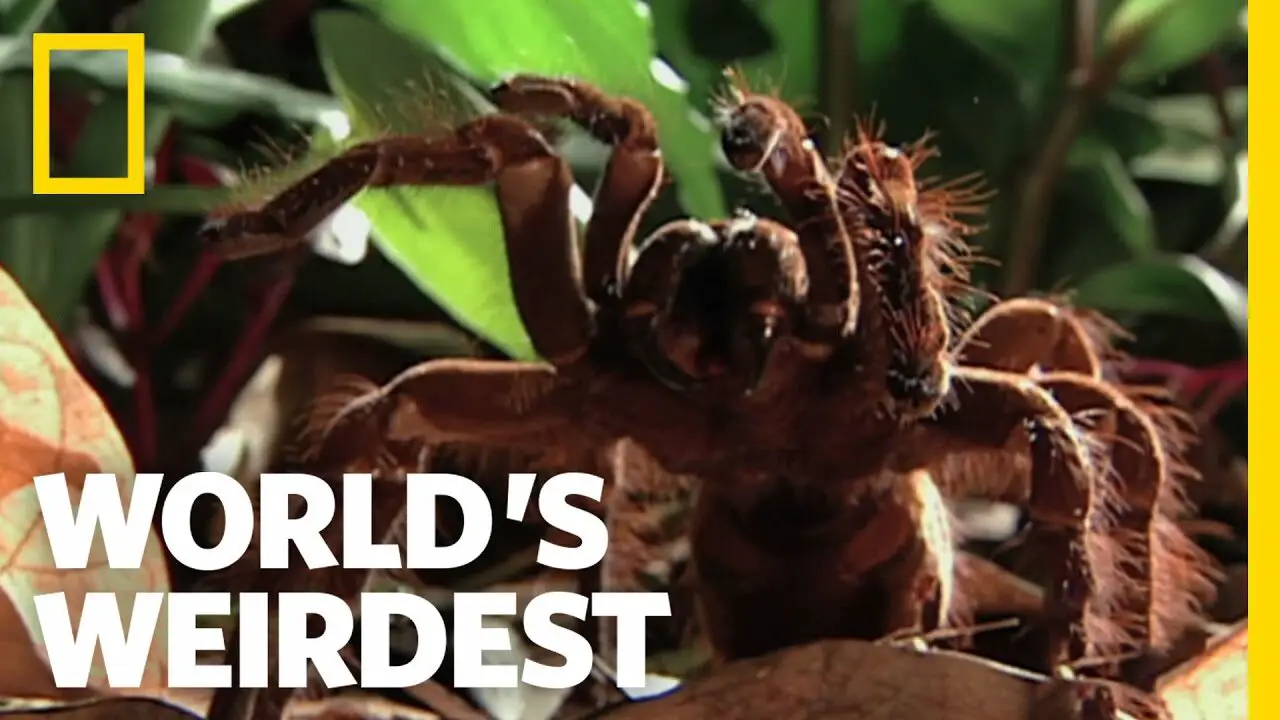Spiders usually have eight legs, many eyes, and sometimes a venomous bite that causes fear. Nevertheless, these fascinating creatures play an important role in the world’s ecosystem.
Here we explore the world’s top 10 largest vultures, exploring their behavior, habitat, and environmental impact, complemented by expert opinion and personal comments.
List of the top 10 Biggest Spider in the world in 2024. Let’s check the full, detailed list given here:
Top 10 Biggest Spider In The World
10. Cerbalus Aravaensis
- Size: Up to 5.5 inches
- Color: Black and white
- Habitat: Desert dunes of southern Israel
- Behavior: Constructs underground burrows with sand and silk trapdoors
- Diet: Insects and small vertebrates
- Lifespan: Approximately 2–3 years
- Threats: Endangered due to habitat loss from agricultural expansion
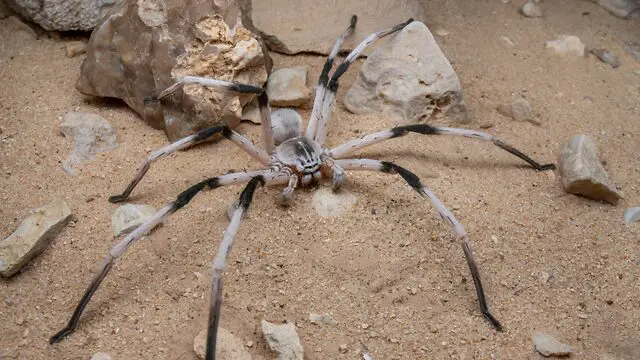
Discovered in 2009, Cerbalus aravensis occurs in the desert dunes of southern Israel, especially in the Arawa region. This spider can grow up to 5.5 inches and is recognized by its striking black and white coloration. It builds underground burrows with trap doors made of sand and silk for hunting prey. Habitat destruction due to agricultural expansion has threatened the eagle’s survival.
Fun Fact😂: Israeli biologist Dr. According to Uri Shanas, “Cerbulus aravensis has a unique and important part of the ecosystem, controlling the population of insects that might otherwise be pests.”Despite its size, the Cerbalus Aravaensis is a master of camouflage, blending seamlessly into its sandy environment.
9. Brazilian Wandering Spider
- Size: Up to 5.9 inches
- Color: Brown with dark patterns
- Habitat: Forests and banana plantations in Brazil, Peru, Colombia, and Venezuela
- Behavior: Nocturnal hunter, aggressive, highly venomous
- Diet: Insects and small vertebrates
- Lifespan: About 1-2 years in the wild
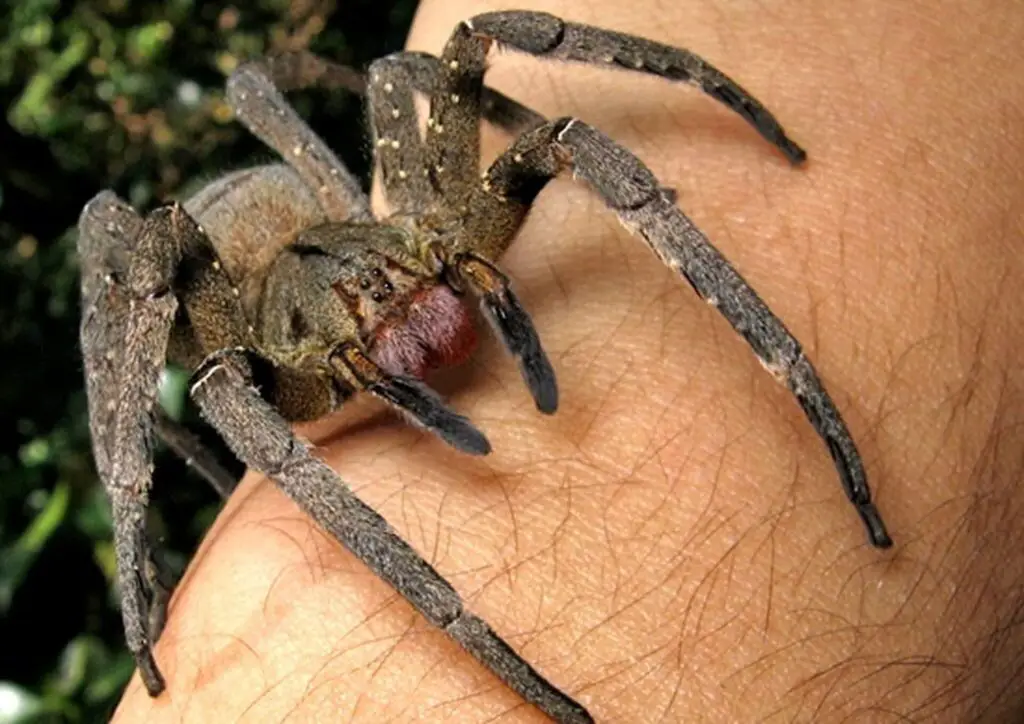
The Brazilian wandering spider, or phoneutria, is known for its highly venomous and aggressive nature. Native to the forests of Brazil, Peru, Colombia, and Venezuela, it can grow up to 5.9 inches. These owls are nocturnal hunters, often seen in banana plantations, earning them the nickname “banana crocodile.”
Their bites can cause severe pain, paralysis, and even death, although death is rare due to the venom’s antidote. Despite their terrible reputation, they play an important role in controlling pest populations. Check detailed about Biggest Chicken in the World.
Did You Know?🤔 The Brazilian Wandering Spider’s venom is being studied for potential medical applications, including treatments for erectile dysfunction.
8. Camel Spider
- Size: Up to 6 inches
- Color: Tan to brown
- Speed: Can run up to 10 miles per hour
- Habitat: Deserts of the Middle East and North Africa
- Diet: Insects, small lizards, rodents
- Lifespan: Approximately 1 year
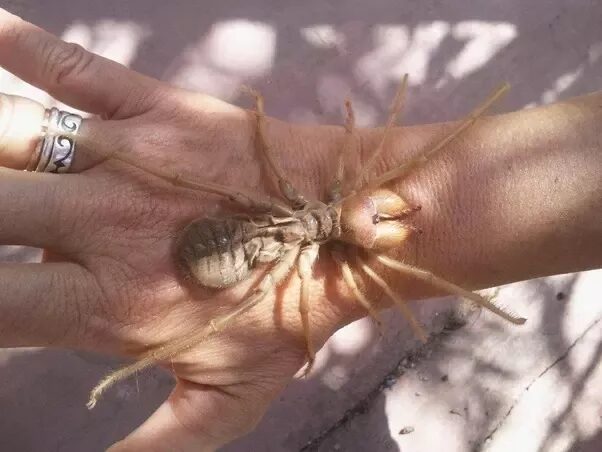
Hailing from the deserts of regions in like the Middle East, making it sexually mature for 6 pages, is this charming little bastard as a camel spider. Your friend and mine can reach upwards of half-a-foot long (totally counting those LEGS) and run up to speeds close to that Olympic sprinting pace we covet so dearly? Contrary to urban legend, it does not eat camels or humans but rather insects, lizards, mice and snakes.
Myth Buster: Fact: Camel spiders not being true spiders but members of separate order Solifugae. Wind scorpions or sun spiders 2 – The Hercules Baboon Spider:
7. Hercules Baboon Spider
- Size: More than 8 inches
- Color: Dark brown to black
- Habitat: Believed to inhabit central Nigeria
- Behavior: Rarely seen, details largely speculative
- Diet: Small mammals and birds
- Lifespan: Estimated to be around 3–5 years

Widely reported as only being last sighted during the early 1900s, when in reality it is likely found across central Nigeria. It might end up being a month longer than 8 inches. Very little is known about the average size of this species due to its rarity.
Conservation Note: he Hercules Baboon Spider is currently being assessed in the wild to delineate its true distribution and habitat needs.
6. Poecilotheria Rajaei
- Size: Up to 8 inches
- Color: Colorful patterns of yellow, white, and gray
- Habitat: Old trees and abandoned buildings in Sri Lanka
- Behavior: Fast-moving, prefers dark, secluded spaces
- Diet: Insects and small vertebrates
- Lifespan: Approximately 8–10 years
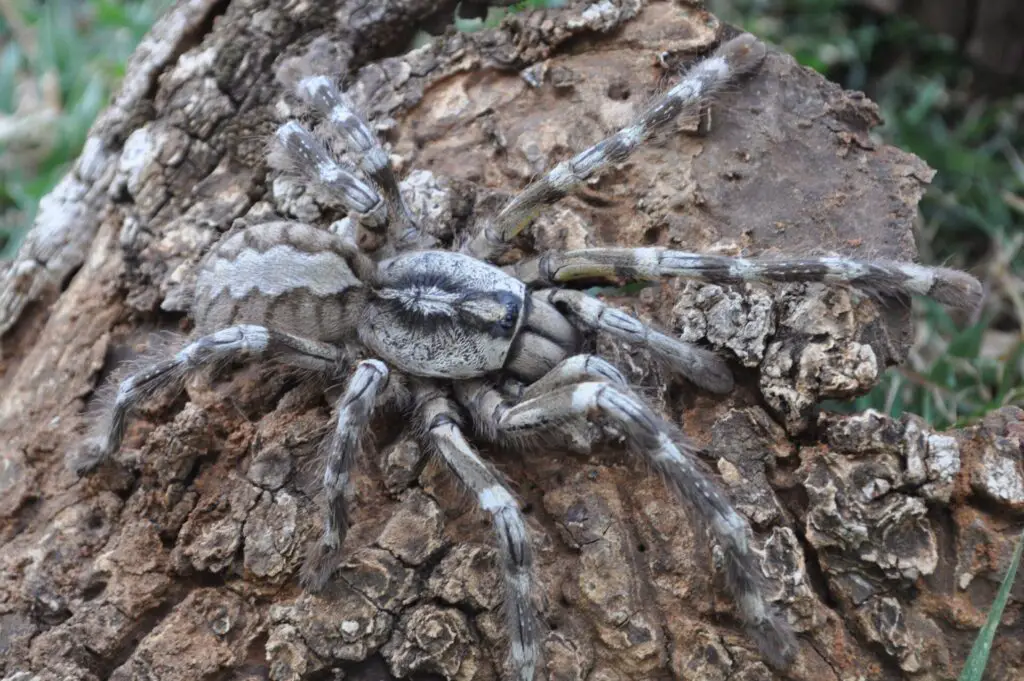
. A newly discovered tarantula found in Sri Lanka is the Poecilotheria Rajaei (pictured above), which is near one -foot long and has been described as gigantic. It actually also goes by the common names of speedy-hued and swift. They make their nests in weathered trees and forgotten buildings
Interesting Fact: The Poecilotheria Rajaei is an ornamental tarantula, a word used to describe this variety of spider for their looks.
5. Colombian Giant Black Tarantula
- Size: Up to 9.1 inches
- Color: Black with red hairs
- Habitat: Tropical forests of Brazil and Colombia
- Behavior: aggressive; uses leg spines for defense
- Diet: Insects and small vertebrates
- Lifespan: About 10–15 years
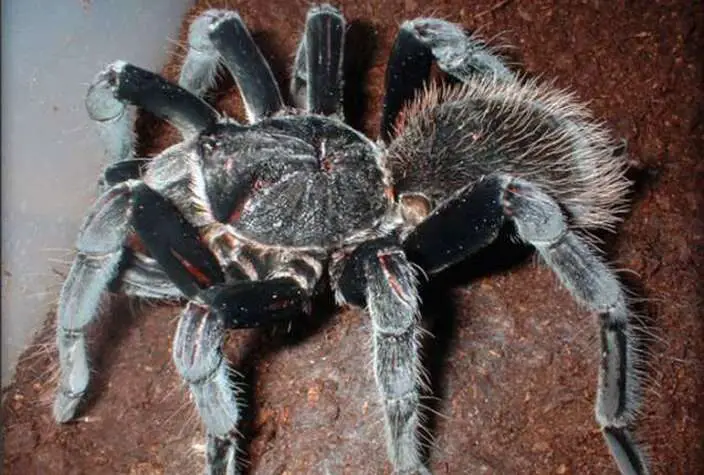
This species of tarantula can grow up to 9.1 inches in length and is found mainly within the tropical rainforests of Brazil & Colombia. This scorpion is extremely defensive and maintains large, radical spines on his legs for protection.
Behavior Insight:The species exhibits a threat display in which it raises its front legs and displays the fangs of this formidable arthropod.
4. Brazilian Salmon Pink Birdeater
- Size: Up to 10 inches
- Color: Brown with pink hairs
- Weight: Over 3.5 ounces
- Habitat: Southeast Brazil
- Behavior: Ground-dwelling, creates burrows
- Diet: Insects and small reptiles
- Lifespan: Approximately 12–15 years
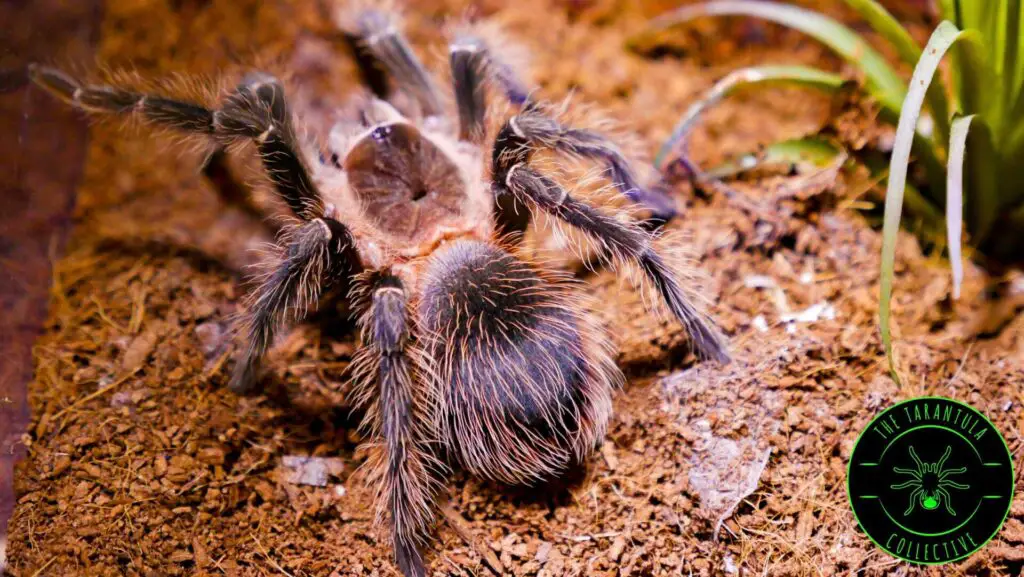
These spiders reach sizes of 10 inches or more and weigh over 3.5 ounces at home in southeastern Brazil In spite of its name, it seldom feeds on birds but rather consumes insects and small reptiles Brazilian Salmon Pink Birdeaters The Brazilian salmon pink birdeater is a big tarantula and though not the biggest compared to some of the other members in its Club, it actually offers a lot for those who keep them as pets.
Pet Potential: The Brazilian Salmon Pink Birdeater is popular among tarantula enthusiasts due to its impressive size and relatively docile nature.
3. Brazilian Giant Tawny Red Tarantula
- Size: Up to 10.2 inches
- Color: Tawny red
- Habitat: Uruguay, Paraguay, Argentina, and Brazil
- Behavior: Calm demeanor, popular as a pet
- Diet: Insects and small vertebrates
- Lifespan: About 15–20 years
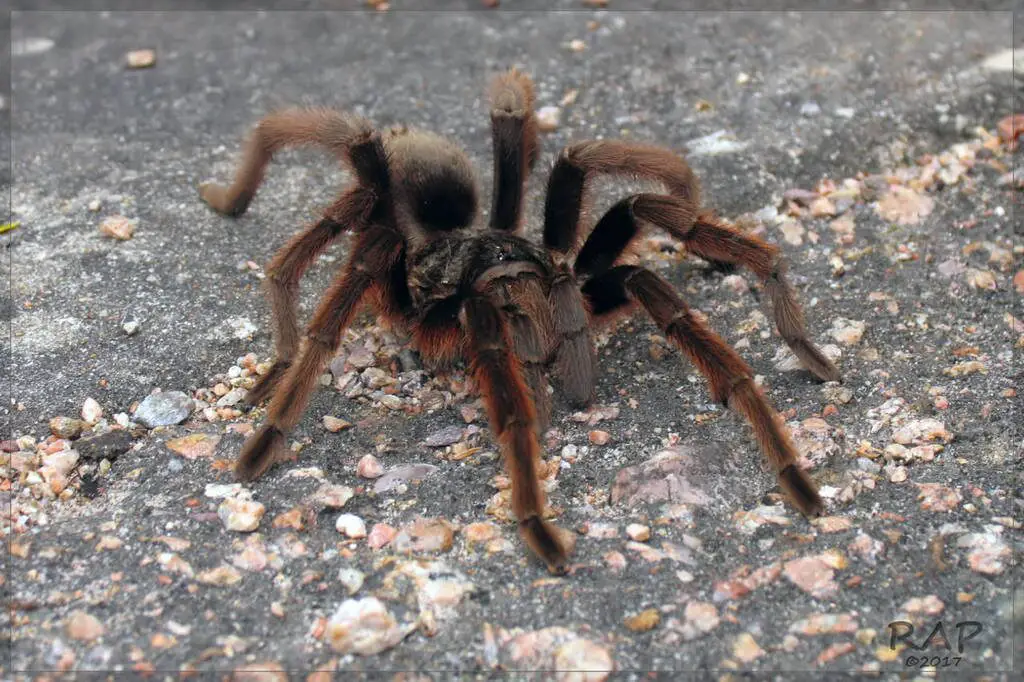
This tarantula is also native to Paraguay, Argentina and Uruguay; the maximum size of these spiders may vary, but it can grow as long as 10.2 inches in length. It has become a popular pet due to its mild poison and calm behavior.
Care Tip: If you plan to keep a Brazilian Giant Tawny Red Tarantula as a pet, ensure it has a spacious enclosure with plenty of hiding spots.
2. Giant Huntsman Spider
- Size: Leg span up to 12 inches
- Color: Brown with dark markings
- Habitat: Caves in Laos
- Speed: Extremely fast; moves sideways like a crab
- Diet: Insects and small vertebrates
- Lifespan: Around 2 years
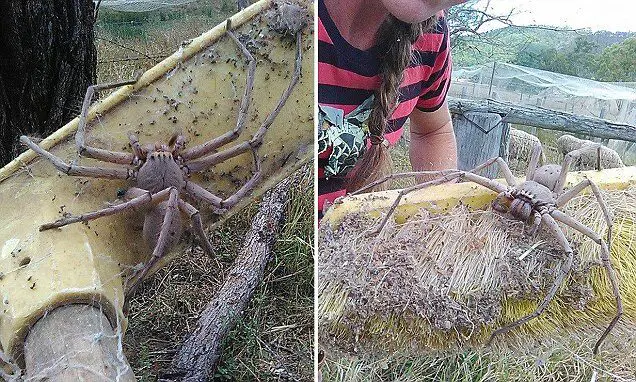
This spider was found in a cave at Laos in 2001 and it can have a leg span up to 12 inches. It is one of the fastest spiders, with a strange ability to walk sideways like crabs. Speed Demon The
Speed Demon: Giant Huntsman Spider is both fast and agile, allowing it to capture prey substantially larger than itself.
1. Goliath Birdeater Tarantula
- Size: Up to 11 inches
- Weight: Over 6.2 ounces
- Color: Brown with dark bands
- Habitat: Rainforests of northern South America
- Behavior: Ground-dwelling, constructs burrows
- Diet: Earthworms, insects, and small vertebrates
- Lifespan: About 15–25 years
The goliath birdeater tarantula ranks as the world’s largest spider according to the Guinness Book of World Records and can tip the scales at 6.2 ounces, exceeding its closest rival in mass, a kind of huntsman species that reaches only up to one-sixth of an ounce fully grown. Inhabiting the rainforests of northern South America, this species feeds on earthworms, insects, and amphibians.
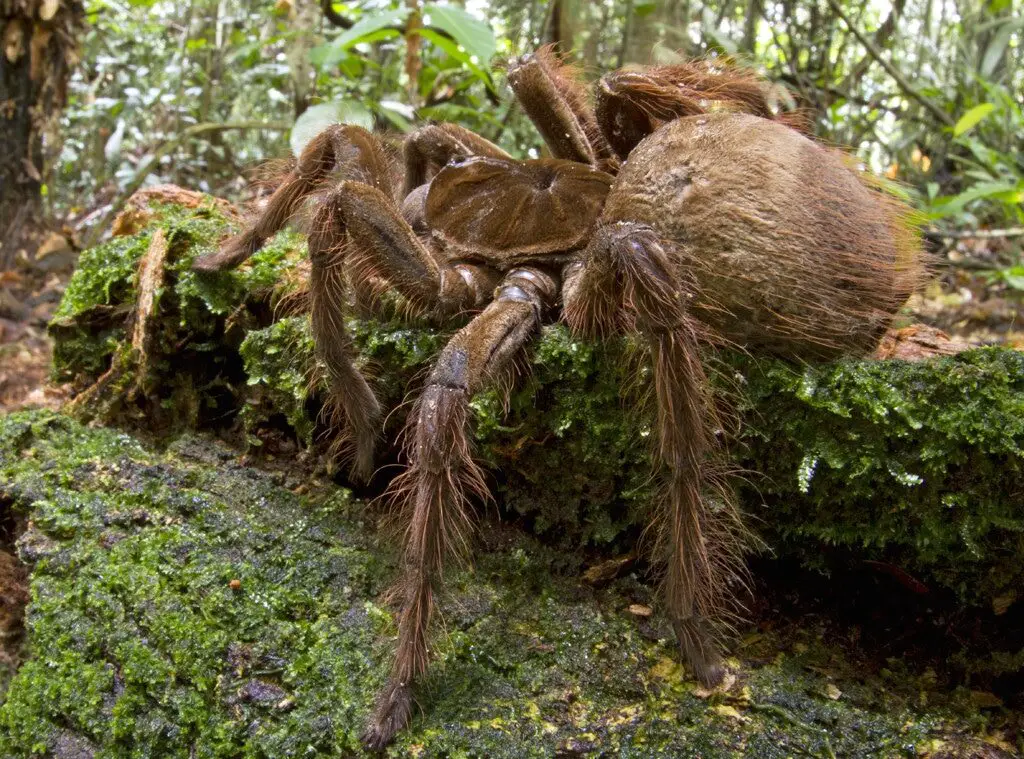
Record Holder: With a leg span of up to 11 inches (28 cm) and weight over 6 oz, the Goliath Birdeater is held by some researchers as the largest spider in terms of mass.
Conclusion
These spiders, despite their terrifying appearance, play crucial roles in their ecosystems. However, many of them are endangered due to habitat loss and other human activities. Understanding and protecting these fascinating creatures is essential for maintaining biodiversity.
Call to Action: If you find spiders intriguing, consider supporting conservation efforts to protect their habitats and ensure their survival for future generations.
Adding fun facts, conservation notes, and practical tips can make your article more engaging and informative for readers. Let me know if you need any more enhancements!
Biggest Spider in the World Found Dead
Here is a list of some of the biggest spiders in the world that have been found dead:
1. Giant Huntsman Spider (Heteropoda maxima)
- Leg Span: Up to 30 cm (12 inches)
- Location: Laos
- Details: Known for its enormous leg span, the Giant Huntsman Spider is the largest spider by leg span.
2. Goliath Birdeater (Theraphosa blondi)
- Leg Span: Up to 30 cm (12 inches)
- Weight: Up to 175 grams (6.2 ounces)
- Location: Northern South America
- Details: The Goliath Birdeater is the largest spider by mass and body length.
3. Megarachne servinei
- Leg Span: Estimated up to 50 cm (20 inches)
- Details: This prehistoric spider-like creature is considered the largest spider in history.
4. Nephila jurassica
- Leg Span: About 15 cm (6 inches)
- Location: Northeastern China
- Details: The largest known fossilized spider.
These spiders are remarkable not only for their size but also for their unique characteristics and habitats. If you have any more questions or need further details, feel free to ask!
FAQ’s
What is the biggest spider in history compared to humans?
The largest spider in history is the Megarachne servinei, a prehistoric spider-like creature that lived around 300 million years ago.
What is the largest huntsman spider ever recorded?
The largest huntsman spider ever recorded is the Giant Huntsman Spider (Heteropoda maxima), discovered in Laos.
What is the biggest Goliath birdeater in the world?
The Goliath Birdeater (Theraphosa blondi) is the largest spider in the world by mass and body length. It can weigh up to 175 grams (6.2 ounces) and have a body length of up to 13 cm (5.1 inches)
How big is the deadliest spider in the world?
The Sydney Funnel-Web Spider (Atrax robustus) is considered one of the deadliest spiders in the world. It has a body length of about 1 to 5 cm (0.4 to 2 inches) and a leg span of up to 10 cm (4 inches).
What is the biggest spider in the world?
The Goliath Birdeater (Theraphosa blondi) is the largest spider in the world by mass and body length. It can weigh up to 175 grams (6.2 ounces) and have a body length of up to 13 cm (5.1 inches)
